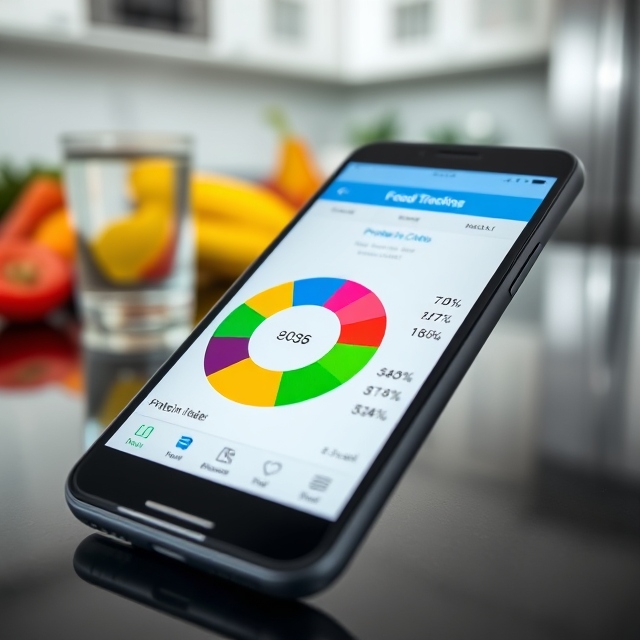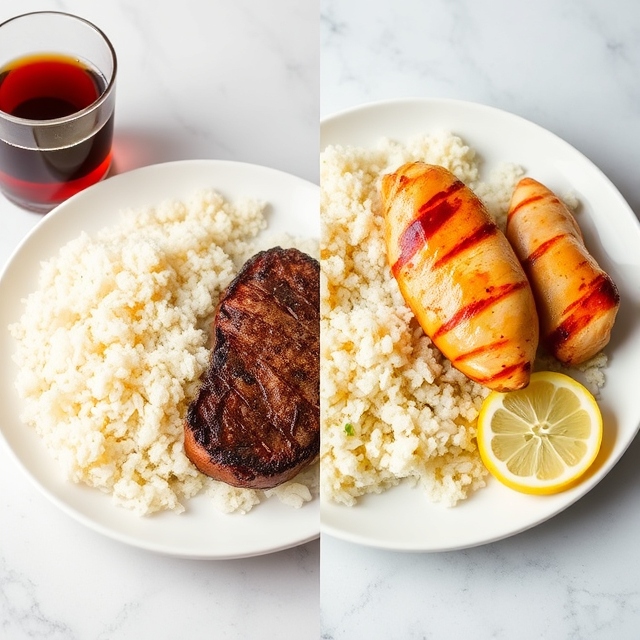The Ultimate Guide to Tracking Portions and Losing Your First 10 Pounds: A Healthy Alternative to GLP-1 Drugs
Losing the first 10 pounds can feel like a huge hurdle, especially if you’re looking for alternatives to GLP-1 drugs. Medications, such as Ozempic and Wegovy, are popular but can come with high costs and side effects. If you’re ready to explore natural, sustainable ways to kickstart your weight loss, tracking portions may be your answer.
In this guide, we’ll walk through proven portion control techniques, tracking tools, and lifestyle changes that can help you reach your weight goals naturally—without relying on medication.
Why Portion Control Works for Weight Loss
Portion control is about understanding how much food your body needs to feel full and energized, not deprived. By learning to manage portion sizes, you reduce your calorie intake naturally, supporting your weight loss journey. Here’s why portion control works:
- Reduces Calorie Intake: Smaller portions mean fewer calories.
- Boosts Metabolism: Balanced portions help maintain steady energy and metabolism.
- Avoids Blood Sugar Spikes: Moderate meals stabilize blood sugar, preventing hunger cravings.
Step 1: Start with Visual Portion Sizes
One of the simplest ways to begin is by using visual cues to gauge portions. This method allows you to track food intake without measuring each bite. Here’s a quick guide to visual portion sizes:
- Protein (Chicken, Fish, etc.): About the size of your palm.
- Carbohydrates (Rice, Pasta): The size of a cupped hand.
- Vegetables: Two handfuls for non-starchy vegetables.
- Fats (Olive Oil, Avocado): The size of your thumb.

Step 2: Use Digital Tools to Track Your Food Intake
Tracking apps provide detailed insights into your eating habits, making it easier to stick to your goals. Apps like MyFitnessPal and Cronometer help you record meals, track calories, and monitor your daily nutrition. Here’s how they support weight loss:
- Monitor Caloric Intake: Track daily calories accurately.
- Macro Counting: Easily monitor your intake of proteins, carbs, and fats.
- Daily Reminders: Reminders help you stay consistent.

Step 3: Master Portion Control with Mindful Eating
Mindful eating involves being present during meals, savoring each bite, and listening to your body’s hunger cues. Here are some ways to eat more mindfully:
- Eat Slowly: It takes 20 minutes for your stomach to signal fullness to your brain.
- Savor Each Bite: Notice the flavor, texture, and aroma of each bite.
- Avoid Distractions: Turn off your phone and TV while eating.

Step 4: Make Healthy Swaps in Your Daily Diet
Small, healthier swaps can have a big impact on your weight loss without drastic diet changes. Here are a few examples:
- Swap White Rice for Cauliflower Rice: Lower in calories and carbs.
- Replace Sugary Drinks with Water or Herbal Tea: Cuts down on sugar and empty calories.
- Choose Lean Proteins Over Red Meat: Chicken, fish, and legumes are excellent alternatives.

Step 5: Stay Consistent and Focus on Progress, Not Perfection
Weight loss is a journey that requires patience and consistency. Instead of looking for drastic changes overnight, focus on gradual, sustainable progress. Here’s how to stay motivated:
- Set Weekly Goals: Aim for small, achievable goals each week.
- Celebrate Non-Scale Victories: Improved energy, better sleep, and enhanced mood are worth celebrating!
- Stay Positive: A positive mindset helps keep your motivation strong.
Common Questions About Losing Weight Without GLP-1 Drugs
- What is the best way to reduce hunger without medications?
Focusing on high-protein foods, fiber, and healthy fats can keep you full longer. Staying hydrated and practicing mindful eating also reduce cravings.
- How fast can I expect to lose my first 10 pounds with portion control?
Each person’s body is different, but a safe rate is about 1-2 pounds per week. Consistent portion control can lead to gradual weight loss in as little as 5-10 weeks.
- Is exercise necessary for portion control to be effective?
While not required, exercise enhances results by boosting metabolism and improving overall fitness. Pairing moderate exercise with portion control can amplify your progress.
Conclusion
Losing your first 10 pounds through portion control, mindful eating, and healthy lifestyle changes is achievable—and sustainable. These steps don’t just help you lose weight; they set you up for a healthier, more balanced life. Remember, the journey is unique for everyone, so focus on consistency over perfection, and watch as your small, healthy choices add up to lasting success.

